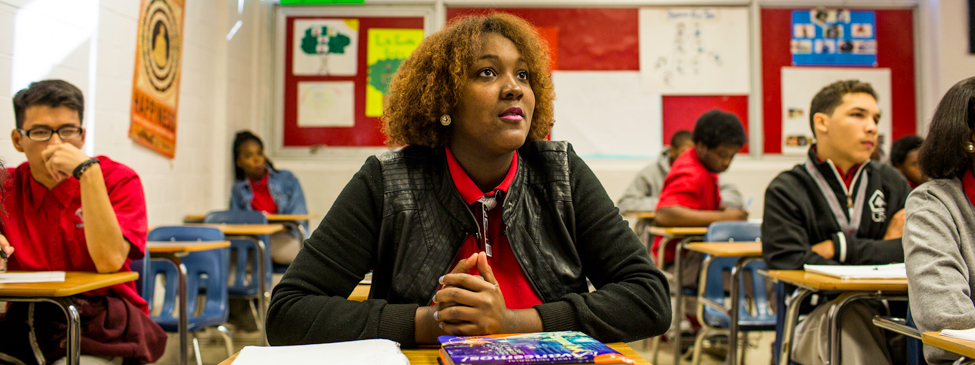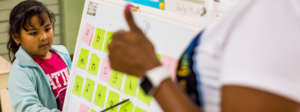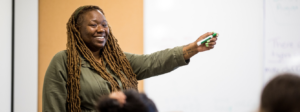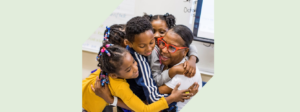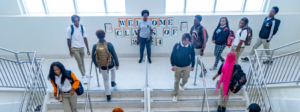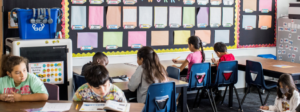The water has receded. The residents have returned. The schools have re-opened. But 10 years later, New Orleans is not the same.
Prior to August 2005, the school system in New Orleans was on the verge of collapse and in need of major academic and structural improvement. Though this could be seen as a tragedy in itself, it took a much more dramatic tragedy—one that played out for the nation live on television—to bring attention to it. Her name was Katrina, and her Gulf Coast debut and destruction would never, ever be forgotten. When disasters like Hurricane Katrina strike, there is almost always a national resurgence of empathy, and this impulse to help brought a cavalry of new educators to the city. I know, because I was one of those educators. I came to New Orleans to help my family and their community get back on their feet, and I’ve been here ever since.
In rebuilding the education system, New Orleans responded to its trauma and pain with positive change. The influx of educators from all over the country enabled schools to be selective and hire teachers they believed could raise achievement. Increased teacher and school leader accountability then followed, helping to sustain stronger outcomes over time, weeding out bad practices and creating school cultures that made students not only feel safe, but proud. Additionally, changes in school governance and a reassessment of disciplinary practices led to fewer suspensions for petty offences—such as students not walking on a taped line or coming to school without the proper uniform—that further perpetuated the school-to-prison-pipeline.
Over time, these changes added up, resulting in New Orleans going from second-to-last in math and English language arts performance to outperforming the entire state. In fact, between 2005 and 2012, the performance gap between New Orleans and higher-performing districts in Louisiana that were not affected by Katrina was closed and eventually reversed—enough of a positive change to improve a typical student’s performance by 15 percentile points.
But it would be far too simplistic to suggest that the hurricane or the new influx of educators saved our schools. Though things have stabilized in New Orleans, the dramatic changes I’ve witnessed over the years as a teacher here have led me to re-evaluate what I believe to be the purpose of education. Today, I believe every child’s education should help them create their best life and their best self in order to achieve their own idea of success. By that definition, I think it’s fair to say we in New Orleans have more work to do.
With the influx of transplants like me, new social norms, values and ideas of success have followed. In some ways, we have created a divergence in cultural expectations, juxtaposed with what already existed here in New Orleans. Of course, there’s nothing inherently wrong with teaching in a community that is not your own, but it does create challenges. In New Orleans, post-Katrina, a great debate on education ensued, centering on how we should define “success” and what that would look like for students, teachers, school leaders and stakeholders.
There is a consensus in New Orleans that one way we have succeeded is if the majority of our city’s graduating seniors enroll in a four-year college or university. As the Recovery School District expanded—eventually becoming the nation’s first all-charter district—along came metrics to determine our progress toward that goal. Many schools have adopted policies like longer school days and changes in school nutrition to maximize cognitive abilities (for example, schools no longer allow students to bring in King Cakes during Mardi Gras—a popular tradition—due to the sugar content).
Many of these practices have, at times, helped schools become more focused and even more culturally diverse. And stronger academic achievement is absolutely critical for our children. But I would also suggest that there have been tradeoffs. Neighborhood schools are no longer the hearts of communities. And as a result, our goals—at least the ones that count toward our successes as a school system—have become standardized.
As educators and policy makers, we should be wary of defining success based on the values of many who were not present before disaster struck New Orleans. While we should remain focused on giving all children a rich and challenging education and make sure they view college as a viable and attainable option, we must also realize that attending a four-year institution might not be the right end goal for every student. I think of a former student of mine, Kelsey, who graduated from high school and went on to community college. Today she is a nursing assistant. When I think of the challenges Kelsey faced throughout the years, she has done well, but she doesn’t meet the city’s indicator of success and won’t be lauded or included as a data point in some fancy graphic that shows our educational success over the years. Yet, I’ve come to believe that her success isn’t mine—or ours—to define.
As education reformers, we can seek to improve schools, but we can’t expect to swoop in and “save” a city’s children. As we dwell on the tenth anniversary of Katrina, it’s important to remember that a hurricane did not “save” New Orleans’ schools, either.
Those of us who helped rebuild the city’s schools should be proud of what we’ve accomplished. Ten years after Katrina, we should celebrate the academic progress that has been made in our schools. But we should also strive for a more inclusive definition of success for our children that values the perspectives and experiences of the community here. We must remember that the city and the families who inhabit it were here long before us, and their cultures and their communities don’t need fixing. The most important thing Katrina did for New Orleans was prove the resiliency of those who weathered the storm and came back to continue the legacy of this great city. They are the real cavalry, and they embody the true success of New Orleans.
